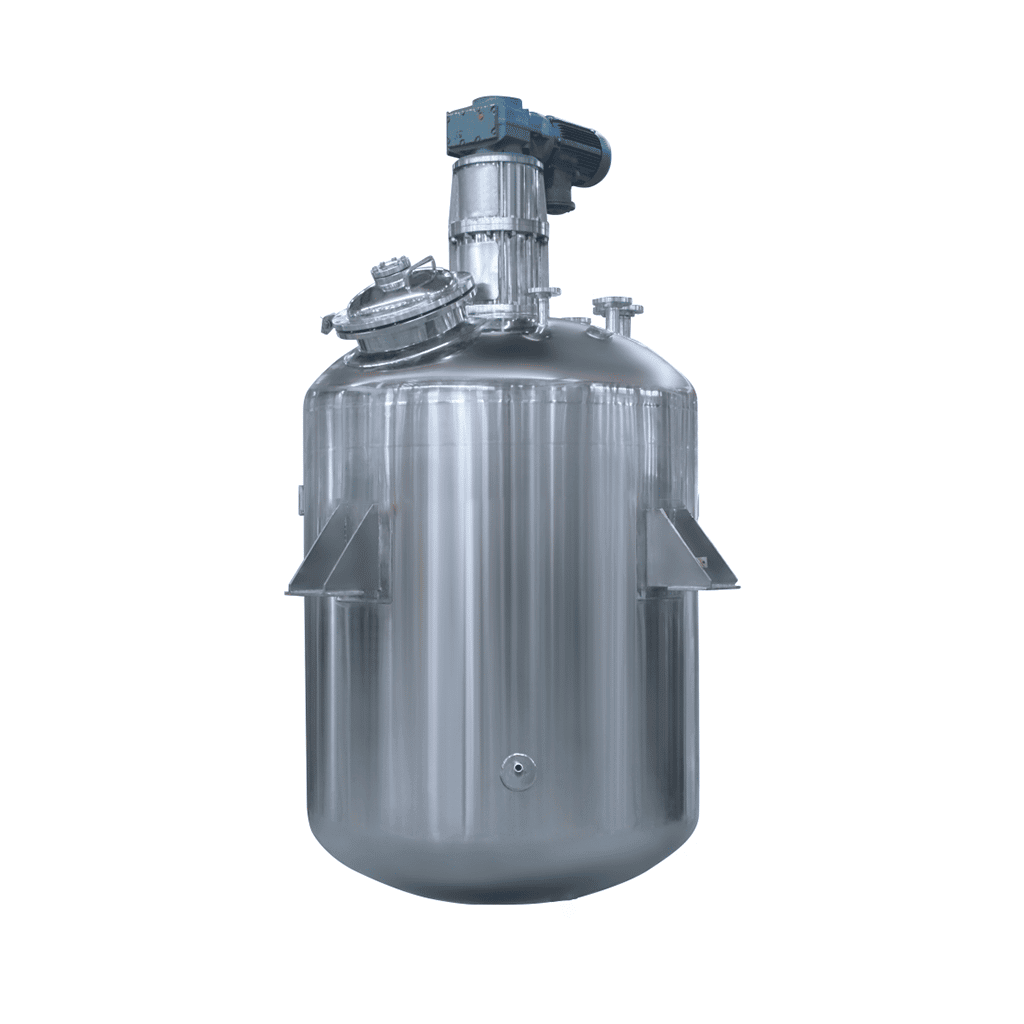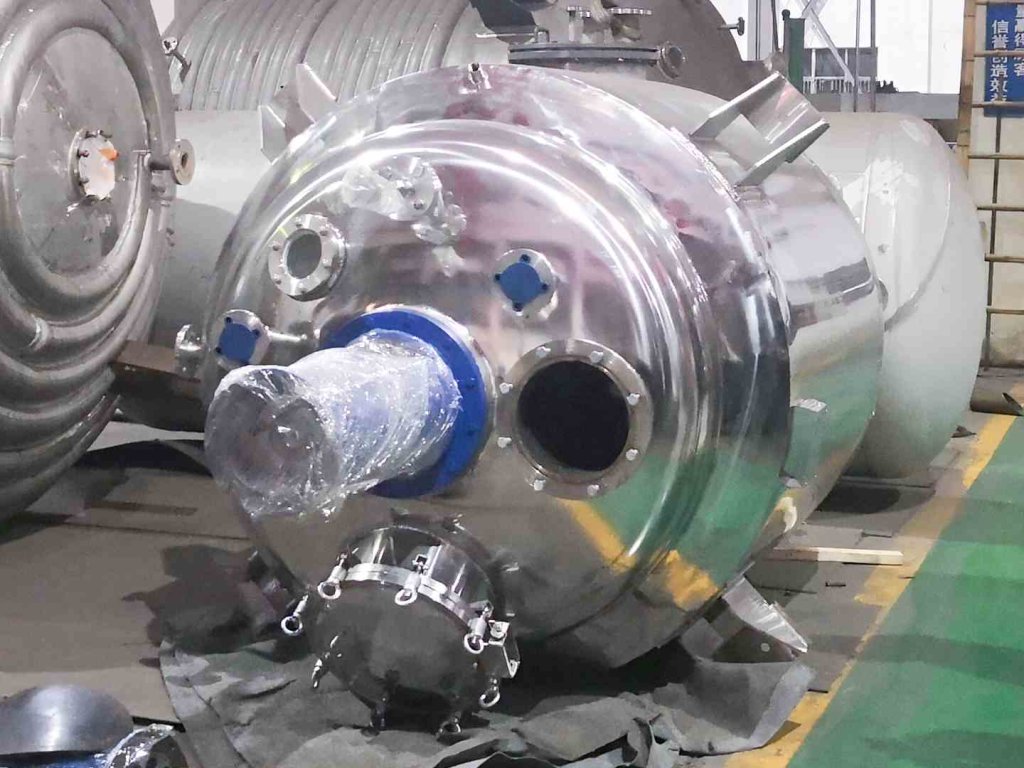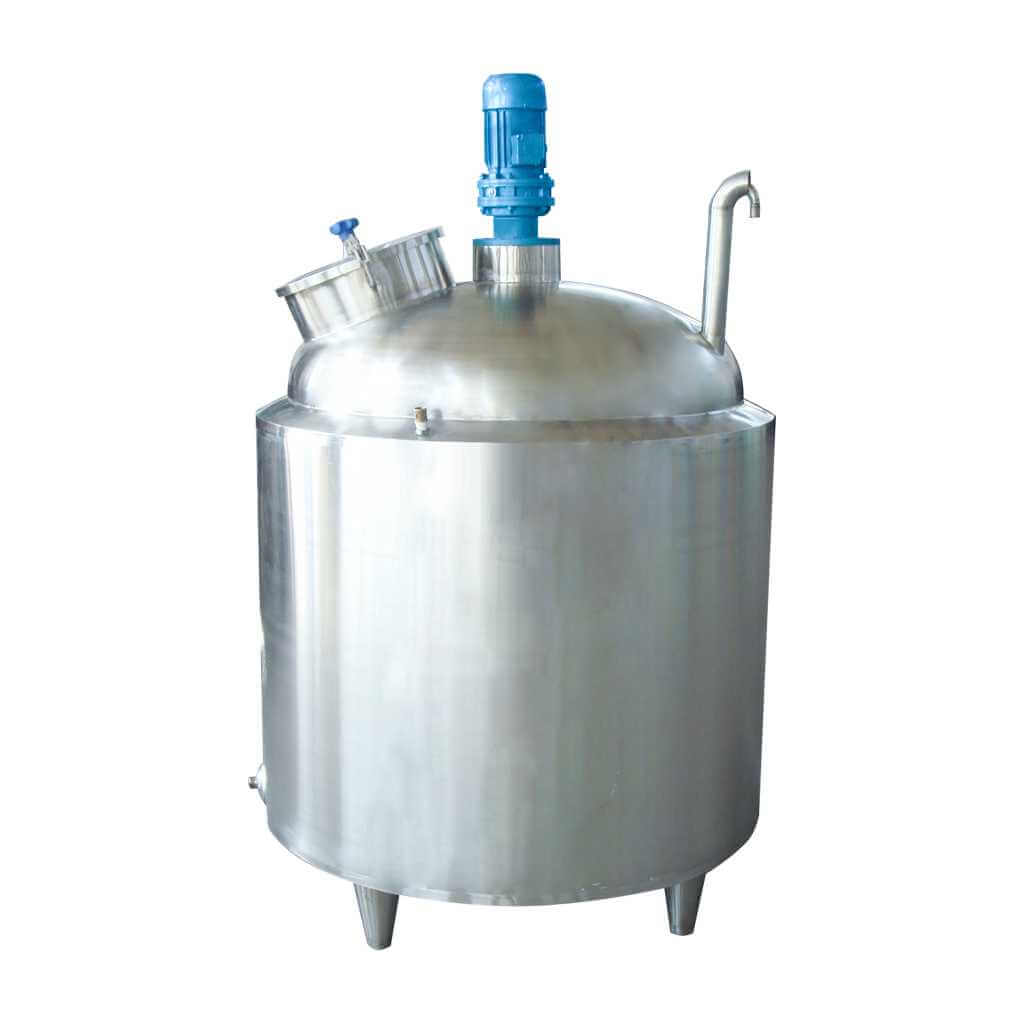
-24-1.jpg)
Stainless Steel Reactor
Stainless Steel Reactor: used in dairy products, sugar, beverages, and other fields
Material
stainless steel (316, 304)
Capacity (L)
10-10000+
Mixing system
anchor, paddle, frame and others
Heating system
electric heating, oil heating and others
A stainless steel reactor is a stainless steel container equipment. The stainless steel reactor consists of a kettle body, a kettle lid, a stirrer, a jacket, a bracket, a transmission device, a shaft seal device, etc. Materials and openings can be made according to user needs and process requirements. Stainless steel reactors are mainly used for stirring, homogenizing, and mixing storage of dairy products, sugar, beverages, food, and various pharmaceuticals.
Request a quoteStainless steel jacketed reactors are widely used in petroleum, daily chemicals, food, pharmaceutical engineering, and other fine chemical engineering. It is a reaction equipment used for vulcanization, nitration, hydrogenation, polymerization, and other processes of materials. Through the structural design and parameter configuration of the stainless steel jacketed reactor, the heating, evaporation, cooling, and low- and high-speed mixing functions required by the process can be realized. According to different production processes and operating conditions, the design structure and parameters of stainless steel jacketed reactors are also different, and they are non-standard container equipment.

Structural composition of stainless steel jacketed reactor
The stainless steel jacketed reactor is mainly composed of five parts: the main part, the transmission device, the heat transfer device, the stirring device, and the shaft seal. The main part includes the kettle body, upper and lower heads, and various process nozzles. The diameter and height of the kettle determine the volume of the stainless steel jacketed reactor. Transmission devices generally consist of motors, reducers, couplings, frames, bearings, connecting plates, etc. The function of the heat transfer device is to control the heat transfer during the reaction process. External jackets or built-in coils are commonly used. Mixing forms generally include anchor type, paddle type, frame type, turbine type, and propelling type. When the diameter of the mixing device is relatively large, multi-layer mixing blades can be used and can be optionally selected according to customer requirements. The shaft seal device is a dynamic seal structure, which mainly includes two types: packing seal and mechanical seal. The former is widely used and has rich experience in use, while the scope of use of the latter has also gradually expanded.
Working principle of stainless steel jacketed reactor
Put the raw materials into the inner layer of the stainless steel jacketed reactor and use the stirring paddle to stir under high pressure, normal pressure, or negative pressure conditions. Different cold and heat sources (refrigeration liquid, hot water, or hot oil) are introduced into the interlayer to perform cyclic heating or cooling reactions. It is mainly used for raw material reaction, reflux, and distillation to realize material reaction, separation, and purification.
The stainless steel jacketed reactor kettle consists of a kettle lid, a kettle body, a jacket, a stirrer, etc. The kettle body and parts in contact with the materials in the stainless steel jacketed reactor kettle are made of OCr18Ni9 or 1Cr18Ni9Ti stainless acid-resistant steel plates. Three types of materials can be used for heating: electric heating rods, thermal oil, and steam. The material should be heated slowly, especially the first time the temperature rises, to prevent oil vapor and water vapor from boiling. When there is no material in the stainless steel jacketed reactor, the thermal power supply and heating oil jacket must not be turned on for testing.
When customizing a stainless steel jacketed reactor, the appropriate jacket structure can be selected based on actual working conditions and economic budget. The jacketed head in the form of an integral jacket is selected according to the jacket diameter and selected head form standards. The connection method between the integral jacket and the kettle body can be divided into two types: detachable and non-detachable. However, stainless steel jacketed reactors are usually made of non-detachable jackets. The jacket of the stainless steel jacketed reactor is equipped with a connecting port to facilitate the entry and exit of heat transfer media and gases. The outlet pipe on the jacket is the same as the general container and does not require special treatment. At the inlet pipe of the jacket, certain measures need to be taken to weld an additional baffle on the jacket wall. When installing the nozzle on the jacket, it should be noted that the opening area of the water inlet pipe or steam baffle must not be smaller than the cross-sectional area of the nozzle channel.

Types of stainless steel jacketed reactor jackets
1. A part of the stainless steel jacketed reactor kettle is equipped with a jacket, which is usually suitable for occasions where the heating area is small.
2. Stainless steel jacketed reactor kettle. Part of the kettle body and the lower head are equipped with jackets. The heating area is large and it is a commonly used jacket structure.
3. In order to achieve segmented control of the heat transfer effect, the stainless steel jacketed reactor adopts a segmented jacketed all-inclusive jacket. The stainless steel jacketed reactor kettle is equipped with a jacket on the entire kettle body. Compared with the first three types, it has a larger heat transfer area.
The stainless steel jacketed reactor is a comprehensive reaction vessel. The functional structure and accessory configuration of the stainless steel jacketed reactor are designed according to the process requirements and reaction conditions. At the same time, care must be taken during operation to avoid damage due to human factors, which may cause production to be stopped. At the same time, attention should be paid to maintenance of the stainless steel jacketed reactor after use, including maintenance of the peripheral equipment of the stainless steel jacketed reactor, so as to extend its service life.




